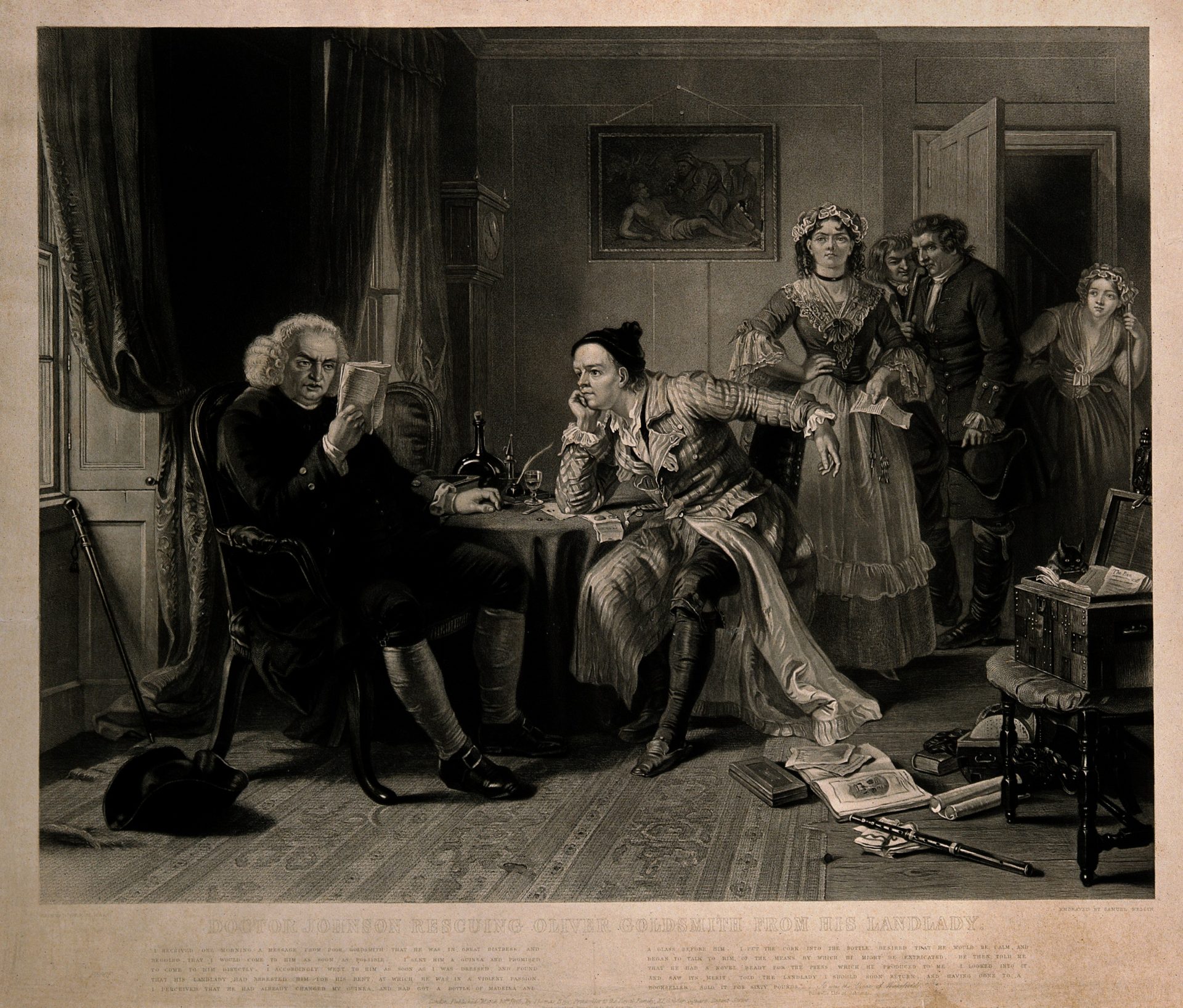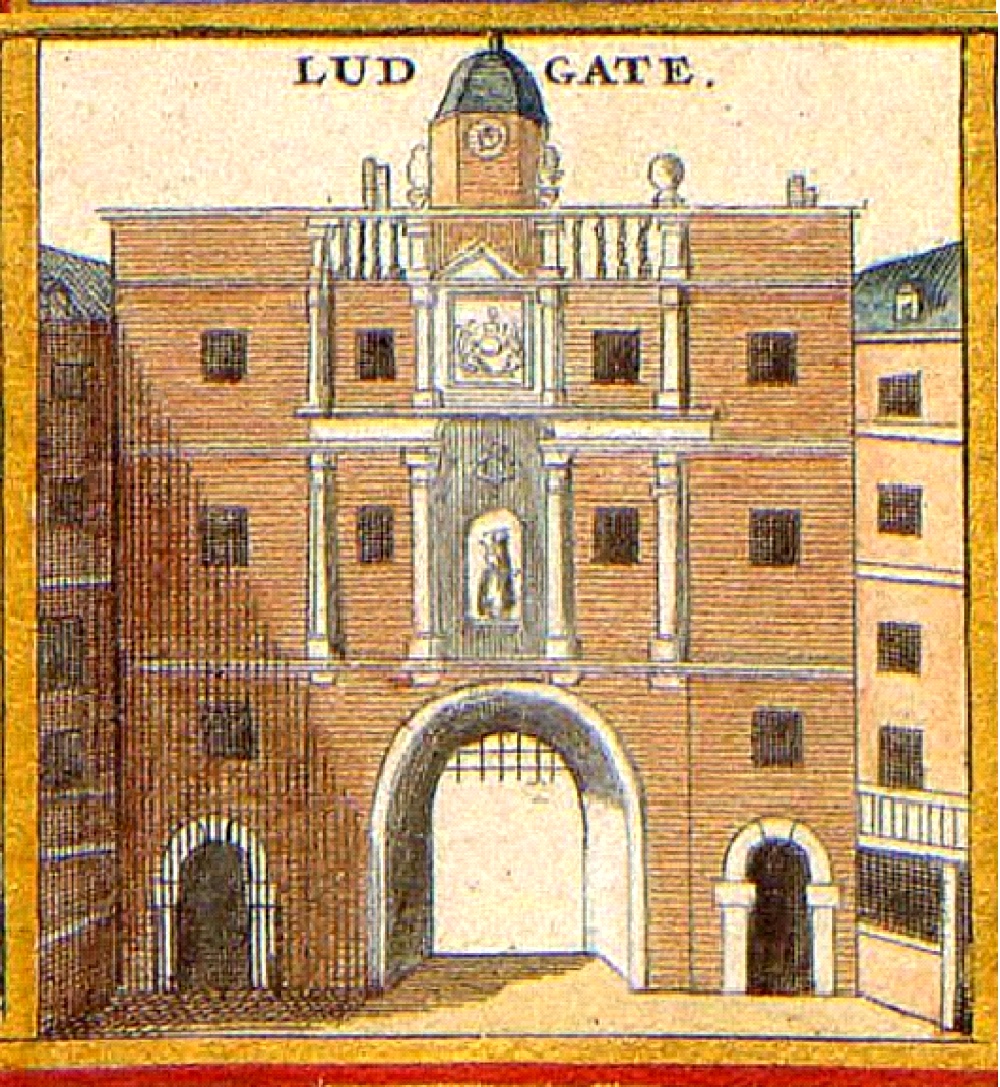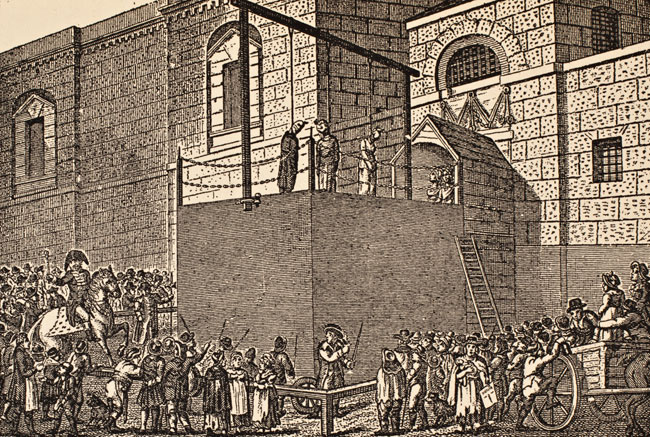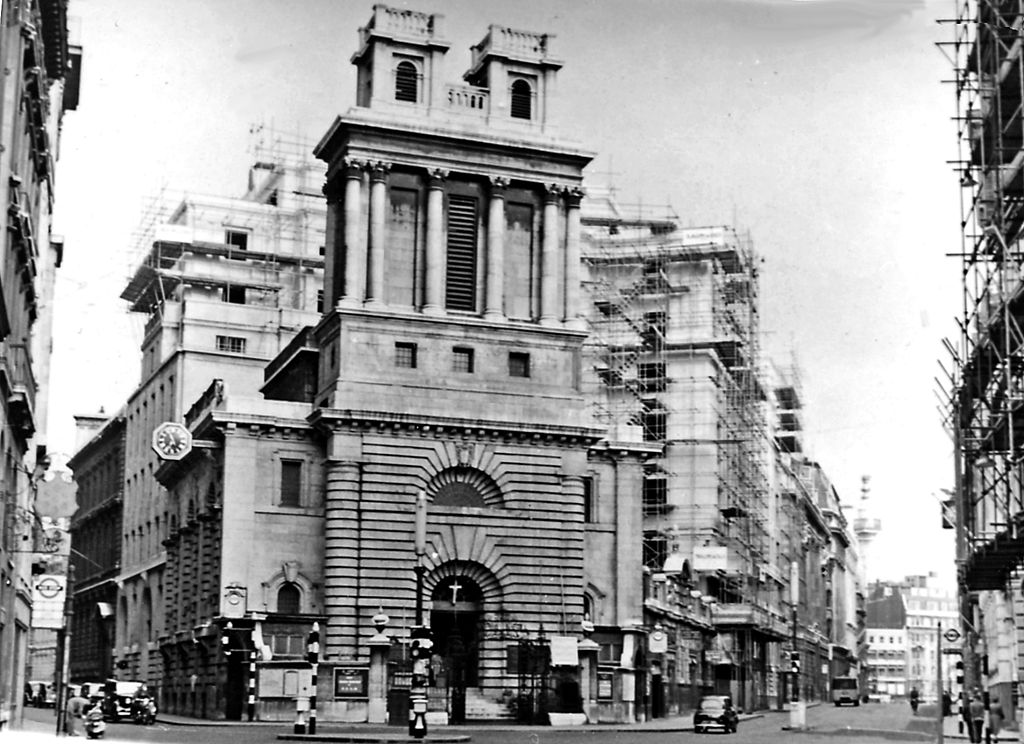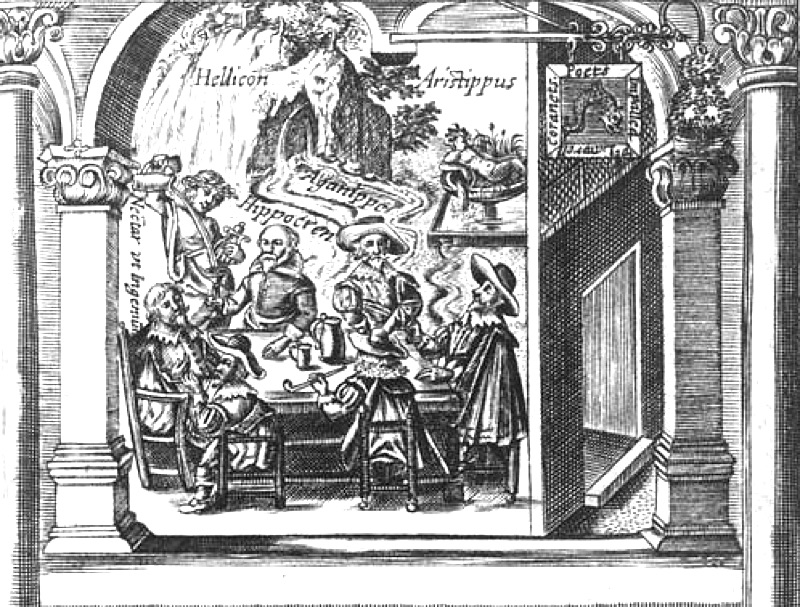Jamaica Wine House, Literary London, By Pen Lister. October 10, 2017. Categories: Literary London, Learning Journeys. Tags: learning-point, London
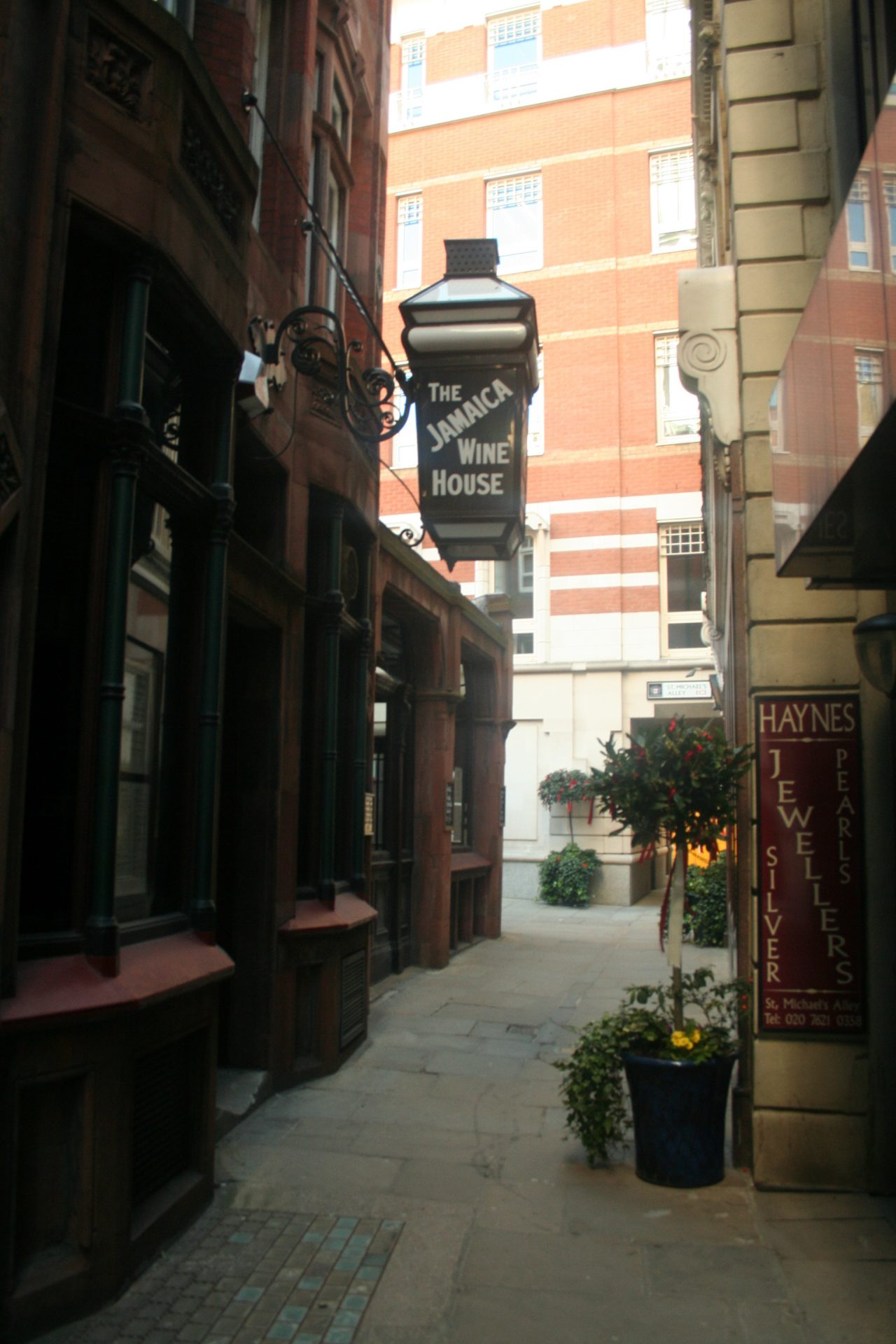
This post is intended for use with the Literary London walking tour and smart learning activities.
In St Michael’s Alley, the Jamaica Wine House (I). 1885.
This was the site of _ Pasqua Rosée’s coffee house , the first in England. Opened in 1652 by Daniel Edwards, a Levant Company trader, and fronted by his servant Pasqua Rosée, it served a coffee very unlike our roast and brew today. Patrons forgave the terrible taste of the drink for its vital and stimulating effects, and the coffee house phenomenon soon became a London-wide fashion. Coffee houses were places of intelligence about business, politics, culture and the arts, depending on location. The coffee houses around Cornhill were started here because of the proximity of the Royal Exchange, and many companies had their origins in the dishes of ‘bitter Mohammedan gruel.’ For the value of information to be found there and the price of entry, coffee houses became known as ‘penny universities’ but despite the novelty of this new social sphere exclusions of class and gender were still in place.
Samuel Pepys, Mon 10 Dec 1660:
‘I to the Hall and there met with Col. Slingsby He and I returned by his coach to the office, and after that to dinner. After dinner he came to me again and sat with me at my house He and I in the evening to the Coffee House in Cornhill, the first time that ever I was there, and I found much pleasure in it, through the diversity of company and discourse.’
In his diaries Pepys records 99 visits to the coffee houses, particularly between 1663 and 1664.
Coffee house rules
As Ukers notes in All About Coffee (1922), “So early as 1674, the aforenamed Paul Greenwood of the Coffee Mill and Tobacco Roll in Cloath Fair, compiled certain ‘Rules and Orders’ to be observed by his customers…”
Pre-eminence of place none here should mind, But take the next fit seat that he can find: Nor need any, if finer persons come, Rise up for to assign to them his room; To limit men’s expense, we think not fair, But let him forfeit twelve-pence that shall swear: He that shall any quarrel here begin, Shall give each man a dish t’ atone the sin; And so shall he, whose compliments extend So far to drink in coffee to his friend; Let noise of loud disputes be quite forborne, Nor maudlin lovers here in corners mourn, But all be brisk and talk, but not too much; On sacred things, let none presume to touch…
http://www.web-books.com/Classics/ON/B0/B701/15MB701.html
Aspects of this place to think about
How do different forms of eating, drinking and socialising influence British culture, art, science or literature? What makes discussion and conversation such an important aspect of the creative or research process?
- Women in coffee houses, pubs and taverns
- The emergence of news and newspapers
- Does looking at your smartphone replace interaction with strangers in public?
- Does a coffee house culture of shared public intelligence exist today? Where?
Content available at the location, about the place or area
Investigate all the other icons on the Aurasma augmented trigger, use the icons guide to find out what is available.
![]()
This guide is accessed via the layers icon in the bottom left of any trigger using a similar icon to this one:

Triggering the Augmented Reality
Remember to focus on the trigger image using the Aurasma camera, centering the image to be as similar to what you see on the map as you can. The Aurasma camera provides small watermarks at each corner of its camera view to help guide your focus.
Img Matthew Black – Flickr, CC BY-SA 2.0
Jamaica Wine House Resources
By Pen Lister October 10, 2017
Further resources about the Jamaica Wine House, Pasqua Rosée and the Coffee Houses of London.
Pasqua Rosee and the coffee shop
Short summary of the history of the Pasqua Rosee coffee house https://blog.oup.com/2012/10/pasqua-rosee-and-the-coffee-shop/
The Lost World of London Coffee Houses
Marvellous webpage with lots of excellent historical images https://publicdomainreview.org/2013/08/07/the-lost-world-of-the-london-coffeehouse/
British Muslim Heritage: The London Coffee House
Pasqua Rosee, a Ragusian man-servant, had been brought to England from Ottoman Smyrna Mr Daniel Edwards, a Turkey merchant … http://www.masud.co.uk/ISLAM/bmh/BMH-IRO-coffee_houses.htm
The Coffee House tour, (video segment)
An interesting clip rounding up some of the voices of coffee house life in London https://youtu.be/3Vaq8tq1KNc?start=45&end=212
Cultivating Civilization: The Age of the English Coffee House
“The coffee houses were unique in England during their time because they were open to men (but not to women) of all classes of life.” http://www.socialstudies.org/sites/default/files/publications/se/5806/580603.html
The Jamaica Coffee House in the City of London
Victorian coffee houses (list) and good images http://www.victorianweb.org/previctorian/nc/coffeehouses.html
John Timbs, Club Life of London
Anecdotes of the clubs, coffee-houses and taverns of the metropolis during the 17 th, 18 th and 19 th centuries (1866) Early coffee-houses - http://www.gutenberg.org/files/41516/41516-h/41516-h.htm#Page_1%20
Samuel Pepys on the coffee houses
Samuel Pepys on the coffee houses https://www.pepysdiary.com/encyclopedia/places/london/coffeehouses/
Virtues of coffee, 1690
Virtues of coffee, 1690 http://www.openculture.com/2014/12/the-virtues-of-coffee-explained-in-1690-ad.html
Scott Shriner on Coffee Houses (academic paper)
Symbols of Behaviour in mid-17 th Century English Coffee Houses https://open.conted.ox.ac.uk/sites/open.conted.ox.ac.uk/files/resources/Create%20Document/Symbols%20of%20Behaviour_Scott%20Shriner.pdf
